
Arlington National Cemetery is one of two cemeteries in the United States National Cemetery System that are maintained by the United States Army. Nearly 400,000 people are buried in its 639 acres in Arlington County, Virginia.

The John F. Kennedy Eternal Flame is a presidential memorial at the gravesite of assassinated United States President John F. Kennedy, in Arlington National Cemetery in Virginia. This permanent site replaced a temporary grave and eternal flame used at the time of Kennedy's state funeral on November 25, 1963, three days after his assassination. The site was designed by architect John Carl Warnecke, a long-time friend of Kennedy. The permanent John F. Kennedy Eternal Flame grave site was consecrated and opened to the public on March 15, 1967.
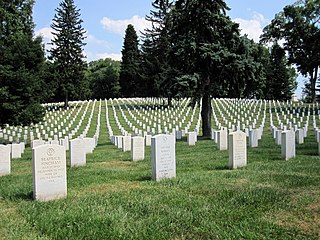
Culpeper National Cemetery is a United States National Cemetery located in the town of Culpeper, in Culpeper County, Virginia. Administered by the United States Department of Veterans Affairs, it encompasses 29.6 acres (120,000 m2) of land, and as 2021, had over 14,000 interments.
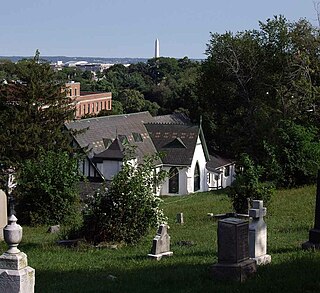
Holy Rood Cemetery is located at 2126 Wisconsin Avenue N.W. at the southern end of Glover Park, adjacent to Georgetown in Washington, D.C. It is at one of the highest elevations in the city and has memorable views. The cemetery contains approximately 7,000 burials, including as many as 1,000 free and enslaved African Americans. It may be the best-documented slave burial ground in the District of Columbia.

The Hurricane of 1928 African-American Mass Burial Site is a pauper's cemetery and mass grave in West Palm Beach, Florida. It is listed on the U.S. National Register of Historic Places. The cemetery is situated near the junction of 25th Street and Tamarind Avenue between I-95 and U.S. Route 1. The site is the location in which 674 bodies of African Americans or those of an unknown race were buried following the 1928 Okeechobee hurricane, while most of the white victims of the storm received a proper burial at Woodlawn Cemetery due to segregation laws.

Rosa Bonheur Memorial Park is a pet cemetery located in Elkridge, Maryland, USA. The cemetery was established in 1935, and was actively operated until 2002. Approximately 8,000 animals and humans are buried in the cemetery's 11+1⁄2 acres, which is large enough to accommodate about 24,000 pets.

Osborne Perry Anderson was an African-American abolitionist and the only surviving African-American member of John Brown's raid on Harpers Ferry. He became a soldier in the Union Army during the American Civil War.
Richard Henry Stuart is an American politician and attorney. A Republican, he was elected to the Senate of Virginia in November 2007. He currently represents the 25th district, made up of nine counties and parts of two others in the Northern Neck, Middle Peninsula, and northern Piedmont, including all of Caroline County, Essex County, King George County, King William County, Lancaster County, Middlesex County, Northumberland County, Richmond County and Westmoreland County, as well as part of King and Queen County and Spotsylvania County.
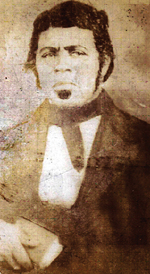
Paul Jennings (1799–1874) was an American abolitionist and author. Enslaved as a young man by President James Madison during and after his White House years, Jennings published, in 1865, the first White House memoir. His book was A Colored Man's Reminiscences of James Madison, described as "a singular document in the history of slavery and the early American republic."
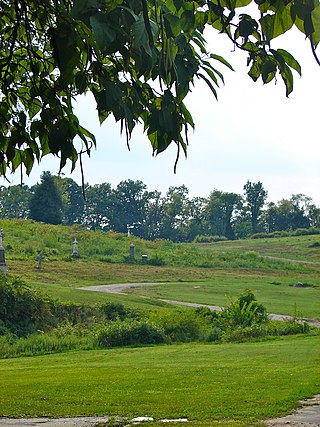
Woodlawn Cemetery is a historic cemetery in the Benning Ridge neighborhood of Washington, D.C., in the United States. The 22.5-acre (91,000 m2) cemetery contains approximately 36,000 burials, nearly all of them African Americans. The cemetery was added to the National Register of Historic Places on December 20, 1996.

The Contrabands and Freedmen Cemetery at 1001 S. Washington St. in Alexandria, Virginia was listed on the National Register of Historic Places on August 15, 2012. It was established in February 1864 by the Union military commander of the Alexandria District for use as a cemetery for the burial of African Americans who had escaped slavery, known as contrabands and freedmen. During early Reconstruction, it was operated by the Freedmen's Bureau. It was closed in late 1868, after Congress ended most operations of the Bureau. The last recorded burial was made in January 1869.
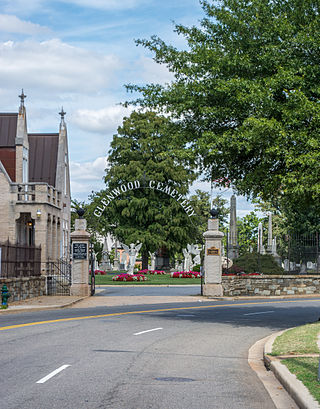
Glenwood Cemetery is a historic cemetery located at 2219 Lincoln Road NE in Washington, D.C. It is a private, secular cemetery owned and operated by The Glenwood Cemetery, Inc. Many famous people are buried in Glenwood Cemetery, and the cemetery is noted for its numerous elaborate Victorian and Art Nouveau funerary monuments. The cemetery was listed on the National Register of Historic Places in 2017; its mortuary chapel was separately listed in 1989.
Columbian Harmony Cemetery was an African-American cemetery that formerly existed at 9th Street NE and Rhode Island Avenue NE in Washington, D.C., in the United States. Constructed in 1859, it was the successor to the smaller Harmoneon Cemetery in downtown Washington. All graves in the cemetery were moved to National Harmony Memorial Park in Landover, Maryland, in 1959. The cemetery site was sold to developers, and a portion used for the Rhode Island Avenue – Brentwood Washington Metro station.

Abbey Mausoleum was a mausoleum in Arlington County, Virginia, in the United States founded in 1924. One of the most luxurious burial places in the Washington, D.C., metropolitan area, many famous individuals, judges, and military leaders were buried there. The mausoleum encountered financial difficulties and declared bankruptcy in 1966. It suffered vandalism numerous times, and several graves were desecrated. Remains buried there were disinterred and reburied elsewhere, and it was demolished in February 2001. Several architectural features of the structure were salvaged. It was located just outside Arlington National Cemetery next to Henderson Hall.

The Confederate Memorial was a memorial in Arlington National Cemetery in Arlington County, Virginia, in the United States, that commemorated members of the armed forces of the Confederate States of America who died during the American Civil War. Authorized in March 1906, former Confederate soldier and sculptor Moses Jacob Ezekiel was commissioned by the United Daughters of the Confederacy in November 1910 to design the memorial. It was unveiled by President Woodrow Wilson on June 4, 1914, the 106th anniversary of the birth of Jefferson Davis, the President of the Confederate States of America.

The Presbyterian Burying Ground, also known as the Old Presbyterian Burying Ground, was a historic cemetery which existed between 1802 and 1909 in the Georgetown neighborhood of Washington, D.C., in the United States. It was one of the most prominent cemeteries in the city until the 1860s. Burials there tapered significantly after Oak Hill Cemetery was founded nearby in 1848. The Presbyterian Burying Ground closed to new burials in 1887, and about 500 to 700 bodies were disinterred after 1891 when an attempt was made to demolish the cemetery and use the land for housing. The remaining graves fell into extensive disrepair. After a decade of effort, the District of Columbia purchased the cemetery in 1909 and built Volta Park there, leaving nearly 2,000 bodies buried at the site. Occasional human remains and tombstones have been discovered at the park since its construction. A number of figures important in the early history of Georgetown and Washington, D.C., military figures, politicians, merchants, and others were buried at Presbyterian Burying Ground.
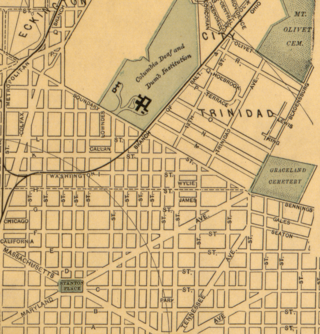
Graceland Cemetery was a 30-acre (120,000 m2) cemetery located in the Carver Langston neighborhood of Washington, D.C., in the United States. It was founded in 1871 as a privately owned secular cemetery open to the public, but it primarily served the city's African American community. From 1884 to 1885, more than 1,200 bodies were transferred to Graceland Cemetery from Holmead's Burying Ground. When the cemetery encountered financial problems, the owners attempted to sell the land. This led to a lengthy and bitter battle involving the Graceland Cemetery Association, lot holders, the government of the District of Columbia, and the United States Congress. Graceland Cemetery was closed by an Act of Congress on August 3, 1894. Removal of remains was also bitterly contested, but a court ruled in the summer of 1895 that the lot holders did not have the right to prevent their removal. Most of the bodies at Graceland were reinterred at Woodlawn Cemetery in Washington, D.C.
Eastern Methodist Cemetery, also known as Old Ebenezer Cemetery and Ebenezer Cemetery, was a 4-acre (16,000 m2) cemetery located in the Barney Circle neighborhood of Washington, D.C., in the United States.
Payne's Cemetery was a 13-acre (53,000 m2) cemetery located in the Benning Ridge neighborhood of Washington, D.C., in the United States. It was founded in 1851 as a privately owned secular cemetery open to the public, but it primarily served the city's African American community. The cemetery was declared abandoned by the city in 1966. About 2,000 bodies at Payne's Cemetery were reinterred at National Harmony Memorial Park cemetery in Prince George's County, Maryland. Two public schools and a recreation center were constructed atop the cemetery in the late 1960s, during which time hundreds of corpses were unearthed and summarily disposed of.
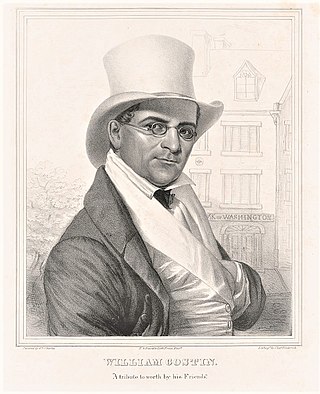
William Costin was a free African-American activist and scholar who successfully challenged District of Columbia slave codes in the Circuit Court of the District of Columbia.
















